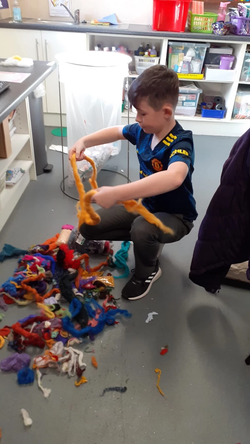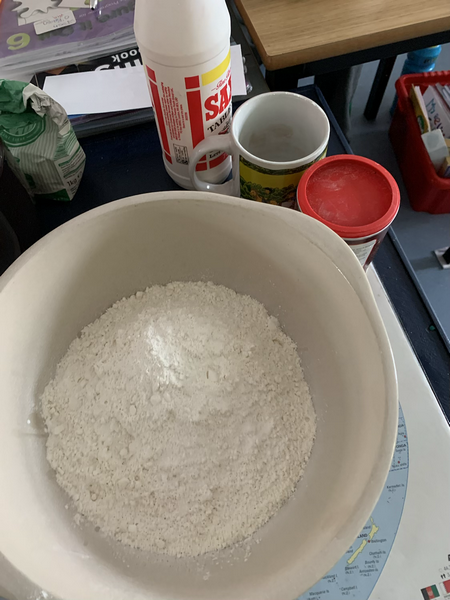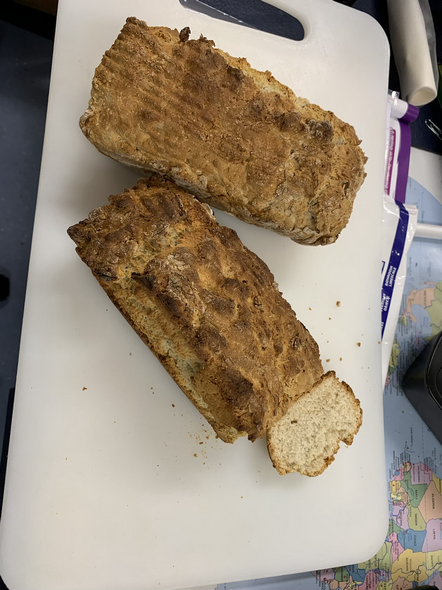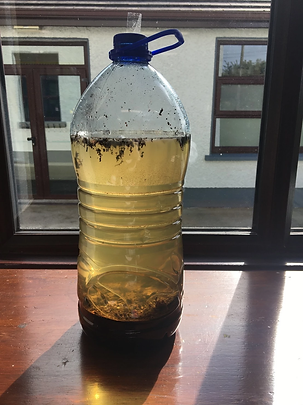
Science Week - Flying Teabag Experiment
Materials:
Teabags
Matches
Plate
Scissors
Health & Safety: Adult supervision is necessary and only teacher handles matches.
Method:
Cut open the teabag and cut off string .
Unfold the bag and pour tea leaves onto scrap paper.
Make the teabag into a cylinder and stand on plate.
Teacher lights top of cylinder and all watch.
Result: The teabag burns to the bottom and quickly floats up to the ceiling.
Scientific Explanation:
As the flame burns it heats the air inside the hollow centre of the tea bag. As the air gets hotter the molecules move more quickly and become less dense and move around. The less dense warmer air rises above the more dense cooler air around the tea bag. Since the ash of the teabag is light and does not require much force to lift it. As the warm, less dense air rises it has enough force to lift the ash of the teabag.
Did you know?
Hot air balloons use a similar principle.
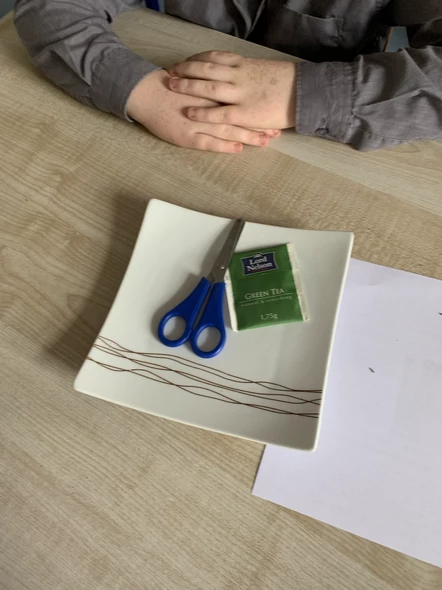













Wet Felting
Wet Felting is a method of using soap, warm water and agitation to tangle fibres together to create felt.
-
Method:
-
Gather wool fibres, bubble wrap or bamboo table mat, soapy water, spray bottle.
-
Spread out bubble wrap or a bamboo mat on a table.
-
Place a thin layer of wool fibres on the wrap or blind.
-
Add a 2nd thin layer, perpendicular on the 1st.
-
Add a simple design.
-
Wet with soapy water and agitate the fibres until felt is made.
Science Week - Hubble Telescope
We learned about the Hubble Telescope. The Hubble Space Telescope is 13.2metres long (length of a school bus).
It weighs 11,110 Kilogrammes (weight of 2 African elephants.
In the 1920’s Edwin Hubble discovered that the universe was much larger than was previously thought and that it was expanding all the time. As a result of his discoveries scientists named The Hubble telescope after him. The Hubble Telescope was launched into space in April 1990 because images taken by telescopes on earth are distorted by turbulence in the atmosphere. Hubble is located about 547 km above Earth’s surface where it completes 15 orbits every day and is considered to one of the most significant advances in astronomy since Galileo’s telescope in the 1670s. It is used to observe the most distant stars and galaxies as well as the planets in our solar system.
Hubble is to be replaced by the James Webb Space Telescope on December 18th 2021. The James Webb Telescope is 100 times stronger than the Hubble. It will change how we see the universe. In the first picture we see The James Webb Space Telescope.



.png)

_edited.png)

.png)













